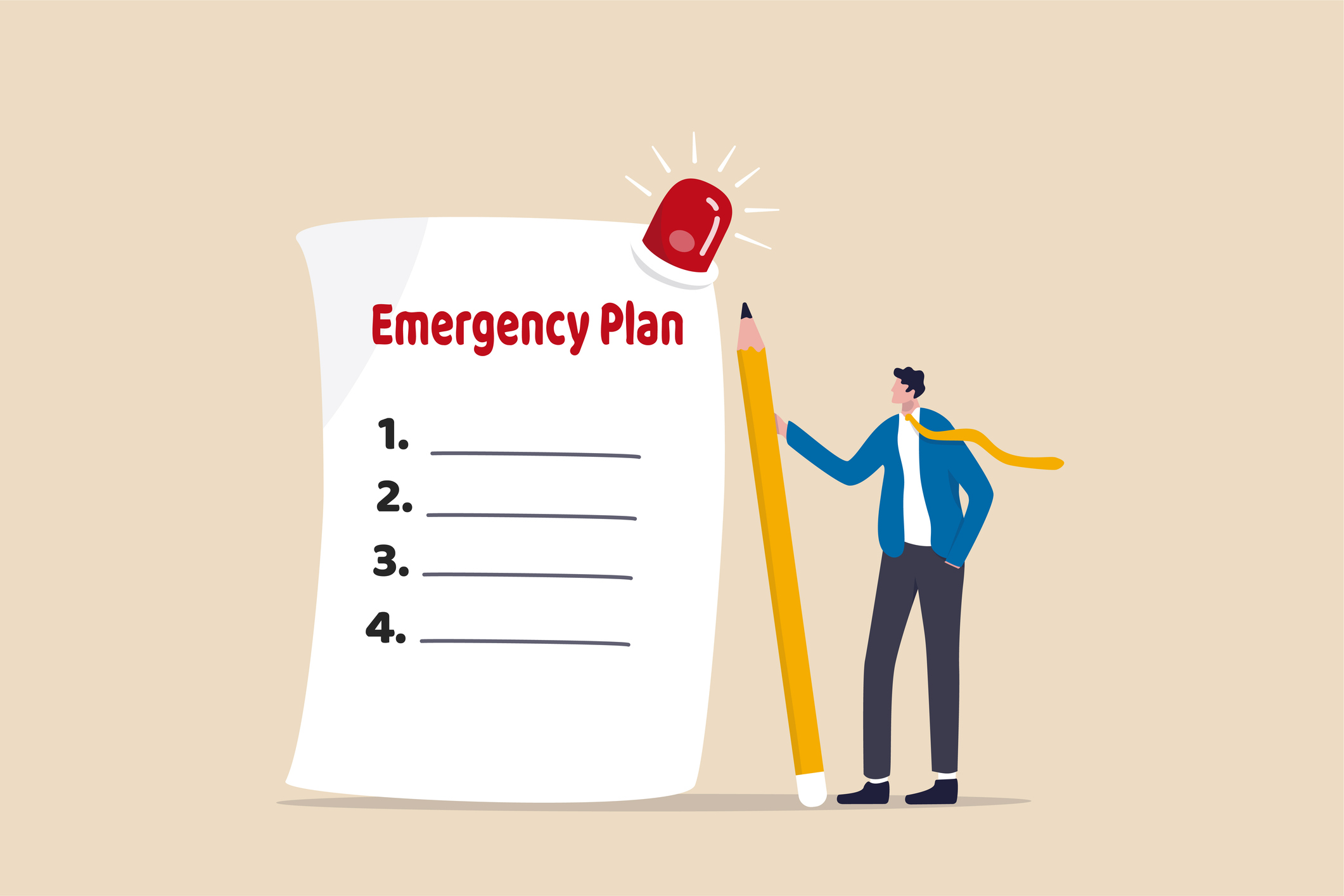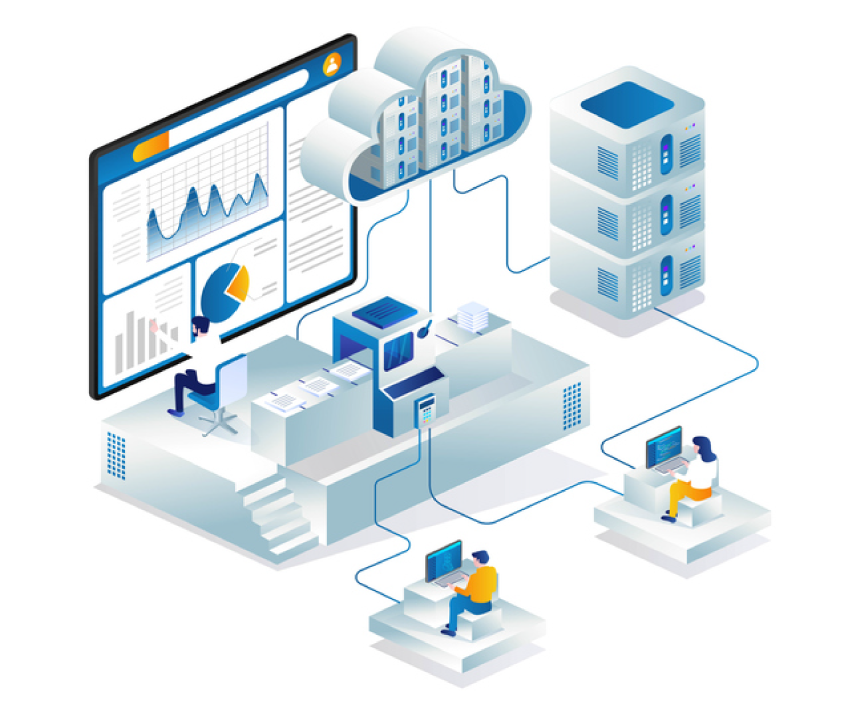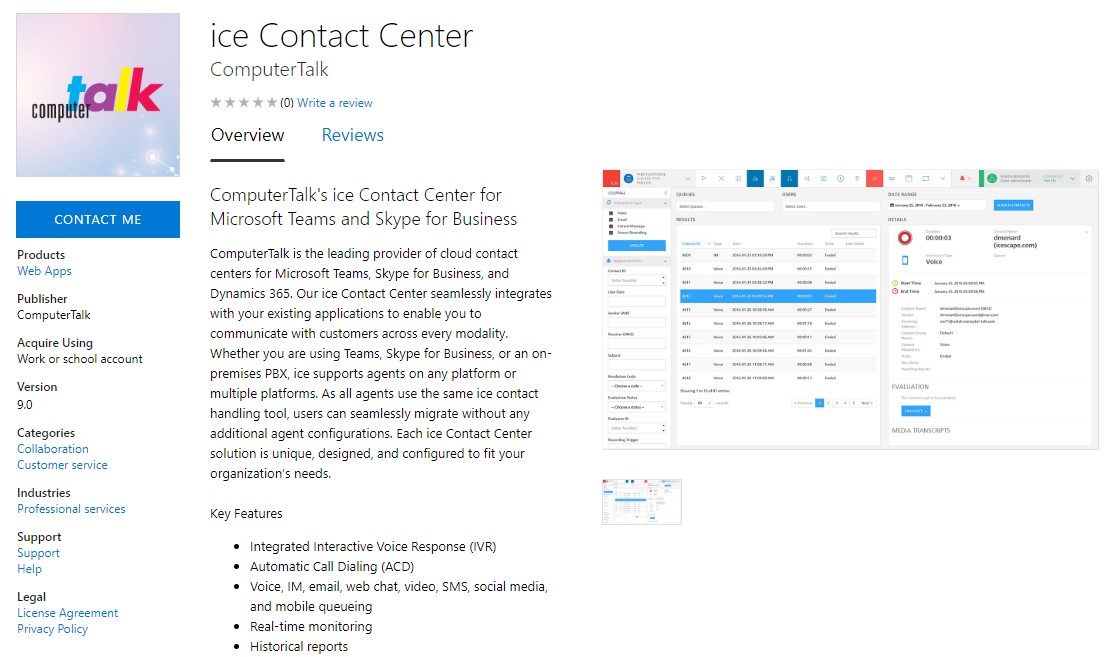Featured
How to Create a Call Center Disaster Recovery Plan
by Erina Suzuki | Published On July 9, 2024 | Last Updated March 6, 2025

A call center disaster recovery plan is crucial to protecting your organization from a range of issues. Various factors can disrupt call center operations, often without warning. Environmental crises, hardware failures, cybersecurity attacks and human errors can all lead to unexpected downtime, performance issues, and even financial losses.
In fact, one study found that 70% of sudden data center outages in 2023 incurred costs of $100,000 or more. Additionally, unexpected outages can harm a company’s reputation with its customers, and increase churn, leading to longer term issues.
With such high stakes to consider, it’s crucial for every call center to implement a robust disaster recovery plan, to help them bounce back from unexpected events. In this article, we’ll guide you through the process of creating an effective call center disaster recovery plan, from conducting risk assessments, to implementing backup solutions, and ensuring regular updates.
Understanding the Importance of a Disaster Recovery Plan
An effective call center disaster recovery plan is something no business can afford to overlook. While all parts of a business can experience issues because of unexpected events, call centers are particularly vulnerable due to their reliance on technology, connectivity, and human resources.
Natural disasters, such as hurricanes and floods can damage call center infrastructure; cyberattacks can disrupt operations and compromise customer data; even internal issues like power outages can leave you unable to support your customers.
Without a disaster recovery plan in place, your organization could spend days, weeks, or months recuperating after a major event. This could have a long-term impact on your call center’s performance, leading to inflated call volumes and hold times, diminished customer experiences, and lost trust.
In fact, according to IDC’s Worldwide survey, outages that take place without an effective call center disaster recovery plan in place can lead to:
- Increased costs: 45% organizations are forced to request employee overtime, or source additional resources to recover from a disruption.
- Reduced productivity: When employees are unable to access crucial data or resources, productivity levels drop, causing significant issues in 40% of incidents.
- Lost revenue: The inability to use the contact center effectively can lead to missed sales opportunities and customer churn in 35% of incidents.
- Data loss: Sometimes, the data lost during an outage or event is irretrievable, leaving companies without crucial insights for training, improvement, and compliance.
Key Components of a Call Center Disaster Recovery Plan

An effective call center disaster recovery plan outlines all the key steps companies need to take to identify and mitigate risks, respond to unexpected issues, and keep losses to a minimum. Every effective plan for a call center crisis management should include the following factors:
- Risk assessment and management: A clear process for identifying potential threats to call center operations, such as internal failures, cyberattacks leading to data loss, natural disasters, and data center failures.
- Business Impact Analysis: A Business Impact Analysis (BIA) outlines the consequences for operational disruptions, identifying critical business functions and helping businesses to prioritize specific risk management strategies.
- Recovery strategies: Comprehensive, step-by-step guides to recovering from common issues. These strategies should cover a range of scenarios, including both minor disruptions and major disasters.
- Plan development: Strategies for developing a complete disaster recovery plan for call centers based on research and risk analysis. The strategies should include clear instructions for activating the recovery plan, and communication protocols.
- Testing and maintenance: Robust guidelines covering how to test the validity of the disaster recovery plan, and ensure it remains up to date. This could include conducting drills, and regularly reviewing plans based on findings.
Step-by-Step Guide to Creating a Call Center Disaster Recovery Plan
 Developing a call center disaster recovery plan can be complex. It often involves various stakeholders working together through each stage of planning, development, implementation and testing, to ensure the strategy achieves its intended goal.
Developing a call center disaster recovery plan can be complex. It often involves various stakeholders working together through each stage of planning, development, implementation and testing, to ensure the strategy achieves its intended goal.
Here are the most important steps you can follow when designing your own plan.
Step 1: Conduct a Risk Assessment
A thorough risk assessment is often the first step in implementing call center disaster recovery strategies. Risk assessments involve identifying the most significant potential risks or threats that could disrupt your operations. For instance, if you’re using a cloud-based call center, a data center or internet outage could pose a significant risk to your processes.
If your call center data centers are in parts of the world that are frequently exposed to extreme weather events like floods and storms, natural disasters could pose a significant threat. Most call center leaders will also need to consider common internal threats, such as issues caused by human error, staff shortages, or even internal sabotage.
Once you have identified all the risks relevant to your call center, the next step is arranging them into a “risk matrix,” by identifying the likelihood and impact on your organization. This often involves analyzing historical data (to search for trends), industry reports, and current trends in your industry.
Step 2: Perform a Business Impact Analysis
Once you’ve conducted a thorough risk assessment, the next step is usually to perform a “Business Impact Analysis” (BIA). This is a process that helps you to determine which functions are critical to your call center. For example, to streamline customer experiences and ensure calls are routed effectively, you’ll need to ensure your Interactive Voice Response system is working effectively.
If you rely heavily on outbound campaigns for sales or proactive service, then any issues with your outbound systems could significantly harm your operations. Carefully consider which essential functions allow your sales and customer service teams to operate efficiently.
Once you’ve identified your critical business functions, determine the impact potential disruptions would have on those functions, and your overall business. For instance, if the data center that allows you to accept calls over the cloud from customers in North America goes down, you risk a significant backlog of customer queries, which can damage your brand reputation and result in a potential loss of business.
To quantify the impact, remember to consider influential factors such as the duration of the disruption, the number of customers affected, and the financial repercussions. This information will help you prioritize your recovery efforts.
Step 3: Develop Recovery Strategies
Developing recovery strategies is about determining exactly how you’re going to respond to each disruption or disaster. Most call centers will need to think carefully about:
- Data recovery: How will you restore access to critical data? Will you already have robust data backup solutions in place to ensure critical information is protected? How quickly will you be able to access the data you need again if it’s stolen or damaged?
- Communication: What will your communication plan look like when dealing with a disaster? Do you have a clear plan in place for how you’re going to reach staff members? Which communication channels will you use, and do you have alternatives in place? For instance, how will you communicate with your team if Microsoft Teams goes down?
- Operations: Which operational strategies can you maintain to ensure business continuity? Do you have failover systems in place if your native Microsoft Teams contact center stops working? Can you re-route calls to different sites if necessary?
As part of your recovery strategy, make sure you have plans in place for implementing technology that will support your call center disaster recovery plans. Cloud backup and storage solutions can help to mitigate the risks of data loss and offer protections against breaches and attacks.
Step 4: Develop the Disaster Recovery Plan
Based on all the information you’ve collected so far; you can now start developing your comprehensive call center disaster recovery plan. This involves the creation of a document that outlines your recovery strategies, the roles and responsibilities of team members, and your communication plan. Ensure your plan is clear and concise, with step-by-step guidance on what to do before, during, and after a disaster occurs.
Make sure this document is easily accessible, by adding it to your business knowledgebase, and any tools or resources your team members access regularly. Remember to be specific about the roles and responsibilities of each of your employees. Assign specific recovery tasks to individuals and teams, and make sure your staff are clear on who they should report to in an emergency.
Additionally, ensure your communication plan is clearly outlined. Establish primary and secondary communication channels for sharing information with employees, customers, and stakeholders. Pre-draft alert messages for different scenarios to expedite communications when events happen and create an up-to-date contact list.
Step 5: Test and Maintain the Plan
Finally, it’s time to test your call center disaster recovery plan. Testing is how you ensure you’re taking a holistic and effective approach to emergency management in contact centers. Don’t just test your plan once; run regular drills and simulations that realistically reflect the incidents you may face.
These exercises will allow your teams to practice implementing the plan in a controlled environment and ensure you can pinpoint any issues you might have overlooked. You can run both scheduled and unscheduled drills, to assess the readiness of your team, and simulate a range of disaster scenarios, from cyber-attacks to power outages, to ensure your strategy is comprehensive.
Even if your plan seems to work perfectly, don’t just forget about it. A call center disaster recovery plan should be a dynamic, living document that’s regularly updated to remain effective. Review the plan periodically, and after any major disruptions or organizational changes. Incorporate the lessons you learn from your drills into your efforts for updating your plan.
Best Practices for Call Center Disaster Recovery Planning

Creating and implementing an effective disaster recovery plan for call centers is a process that requires meticulous strategic thinking, and ongoing commitment. Here are some best practices to ensure an effective disaster recovery plan.
- Conduct comprehensive risk assessments: Don’t just focus on the latest emerging threats in your call center when conducting risk assessments (like new challenges caused by implementing AI). Consider everything that could potentially impact your operations and use a risk matrix to prioritize threats based on their impact and likelihood.
- Regularly update your BIA: The business functions that are most crucial to your call center are likely to evolve over time as you implement new technologies and processes. Make sure you update these assessments regularly, as your organization evolves.
- Use clear documentation: Document every part of your call center disaster recovery plan clearly and concisely. Include detailed instructions for recovery procedures, communication protocols, and operational strategies.
- Optimize your communication plan: To keep employees, stakeholders, and customers informed, protect your reputation, and stay compliant with industry regulations, you need a strong communication plan. Make sure you have clearly defined primary and secondary communication channels laid out and keep contact information up to date.
- Leverage technology: Take advantage of the technology available to you, such as monitoring and analytical tools that can offer insights into emerging threats, and cloud-based data backup systems. Leverage contact center failover mechanisms to ensure you’re never left without a way to communicate with your customers.
Common Pitfalls to Avoid
Just as it’s important to follow the right best practices with your call center disaster recovery plan, it’s also crucial to be mindful of common pitfalls such as:
- Irregular testing: Failing to test your disaster recovery plan regularly and examine how well your team performs in different scenarios can lead to significant problems. Commit to regularly running drills, tests, and simulations. For instance, you might run a test simulating what would happen if your contact center suffered a data breach.
- Infrequent updates: Your call center and the risks you face will change over time. Failing to update your recovery plan can render it ineffective. Make sure you’re updating and reviewing your plan regularly to avoid gaps in your strategy.
- Neglecting training: Without the right training, employees may struggle to execute a plan effectively during a disaster. Regular training sessions and drills are critical to making sure your teams know their roles, and how to respond to issues.
- Inadequate resource allocation: Don’t underestimate the importance of attributing the right resources for disaster recovery planning. Make sure you allocate enough time, budget, and personnel to your strategy.
Remember Continuous Improvement and Training
Most importantly, remember that the key to an effective call center disaster recovery plan is a focus on constant optimization and improvement. This means delivering the right training and guidance to team members to ensure they’re familiar with best practices and their roles, conducting tests, and post-drill analysis reports, and frequently reviewing your plan.
Stay informed about the new risks and threats emerging in the call center landscape, and regularly connect with stakeholders to ensure you’re prepared for every potential issue.
Mastering Call Center Disaster Recovery Planning
Effective call center disaster recovery planning isn’t just an important strategic initiative for business leaders; it’s crucial to ensuring you can protect your resources, your customers, and your brand’s reputation. Following the steps above will help to ensure you build an effective strategy that empowers and informs your team and protects your organization against emerging risks.
The right technology can also enhance your disaster recovery strategy, giving you the resources you need to manage disruptions, reduce risks, and keep your team aligned.
Contact ComputerTalk to see how we can help you optimize your disaster recovery plan with our intuitive cloud-based technology.
More from our blog
 As a Microsoft Gold Certified Partner, member of TAP, and with three gold competencies and two silver competencies, there’s no doubt that ComputerTalk has strong ties with Microsoft. We are pleased to announce that you can now connect with us...
As a Microsoft Gold Certified Partner, member of TAP, and with three gold competencies and two silver competencies, there’s no doubt that ComputerTalk has strong ties with Microsoft. We are pleased to announce that you can now connect with us...
 Boost your sales with outbound lead generation! Learn best practices, common mistakes to avoid, and how cutting-edge technology can streamline your outreach in this guide.
Boost your sales with outbound lead generation! Learn best practices, common mistakes to avoid, and how cutting-edge technology can streamline your outreach in this guide.
 On Wednesday, April 22nd, ComputerTalk hosted the first of its series of COVID-19 related Lunch and Learn webinars. The topic was Supporting Remote Workers with ice.
On Wednesday, April 22nd, ComputerTalk hosted the first of its series of COVID-19 related Lunch and Learn webinars. The topic was Supporting Remote Workers with ice.


